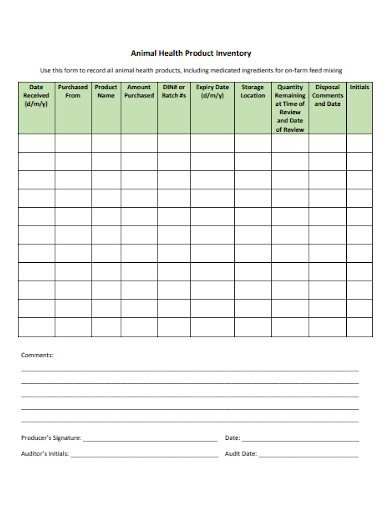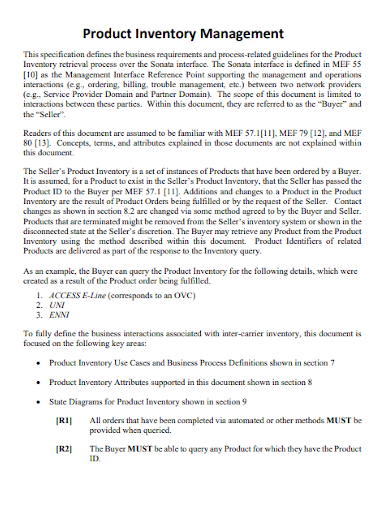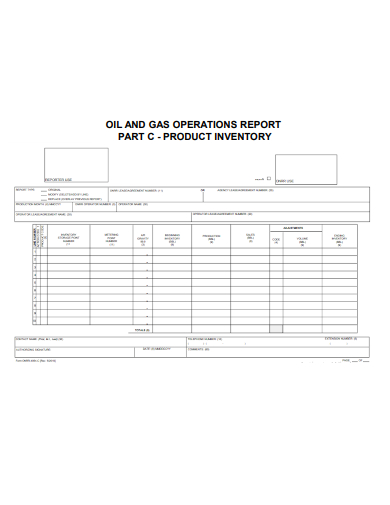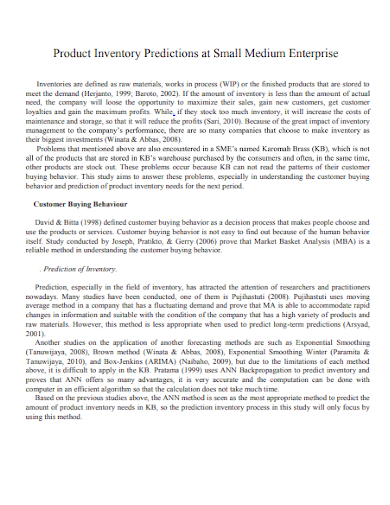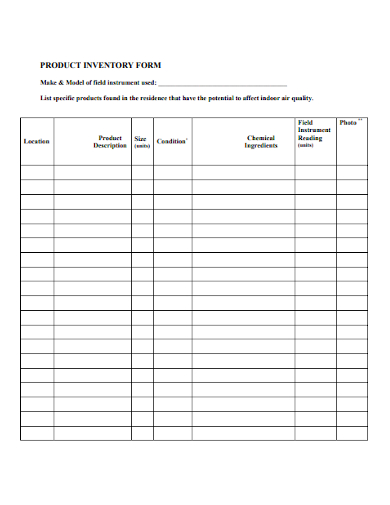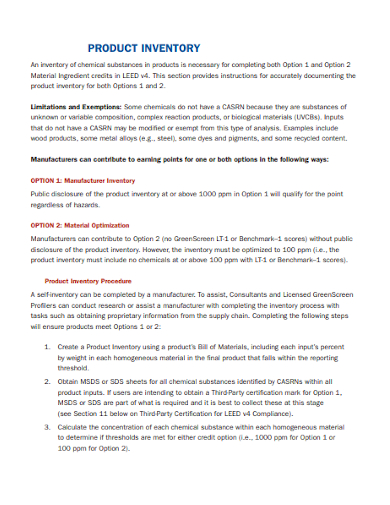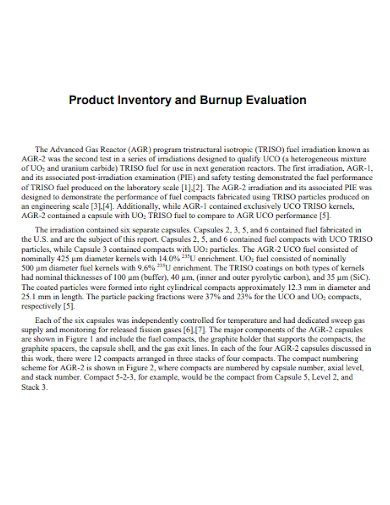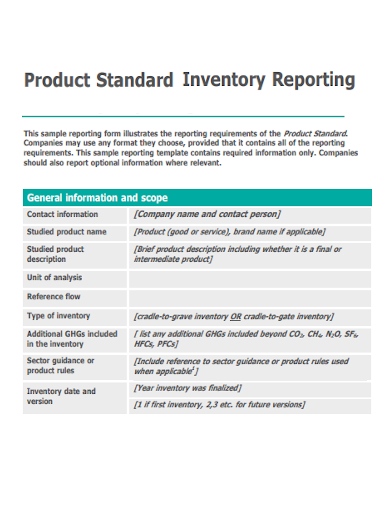At work or at home, an inventory template is used to track and record objects. So get managed with our free online inventory templates, whether you’re trying to keep track of supplies at the office or stuff in your house. No more hand-writing inventory lists or stocktakes; instead, enter inventory information into your preferred inventory record form or online spreadsheet and examine the data in an easily readable format. Your data will be safely kept.
10+ Product Inventory Samples
Product inventory is used to keep track of the number of goods and items your organization has on hand. Begin by entering the name of the product, its inventory ID number, its description, the vendor, the stock location, the unit price, and the quantity. Your Product Inventory Template will be carefully kept once you’ve included all of the information you require. You may then access and change critical inventory data from any location, at any time.
1. Product Inventory Template

2. Product Inventory Usage Report
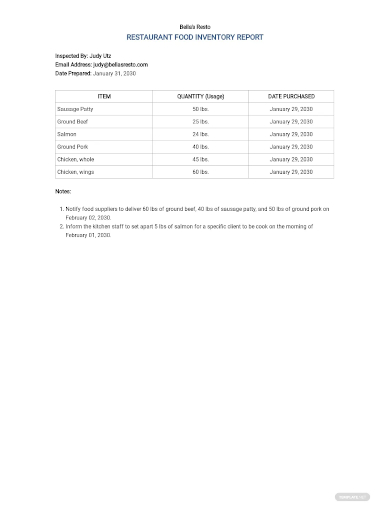
3. Animal Health Product Inventory
4. Product Inventory Management
5. Oil & Gas Product Inventory
6. Sample Product Inventory
7. Product Inventory Predictions at Small Enterprise
8. Product Inventory Form
9. Basic Product Inventory
10. Product Inventory and Burnup Evaluation
11. Product Standard Inventory Reporting
Managing an Inventory
- Prioritize your inventory – Organizing your inventory into priority groups will help you figure out which things you need to order more of and more regularly, as well as which are critical to your business but may be more expensive and take longer to move. Experts recommend categorizing your inventory into three categories: A, B, and C. The A category consists of higher-ticket things that you will need less of. Low-cost items with a high turnover rate fall into the C category. The B group consists of things that are modestly priced and move out the door slower than C items but faster than A items.
- Track all product information – Keep track of the product details for each item in your inventory. SKUs, barcode data, suppliers, countries of origin, and lot numbers should all be included in this information. You might also want to keep track of the pricing of each item over time so you’re aware of issues like scarcity and seasonality that can affect the price.
- Audit your inventory – Once a year, some firms conduct a comprehensive count. Others conduct spot checks on their most popular items on a monthly, weekly, or even daily basis. Many people engage in all of the aforementioned activities. Make it a habit to physically count your inventory on a regular basis, regardless of how often you do it.
- Analyze supplier performance – Your inventory may be harmed by an unreliable supplier. It’s time to take action if your supplier is consistently late with deliveries or consistently under-delivers an order. Talk to your supplier about the issues and figure out what’s wrong. Prepare to change business partners or deal with erratic supply levels and the risk of running out of inventory as a result.
- Practice the 80/20 inventory rule – Generally speaking, 20% of your stock accounts for 80% of your profits. Make inventory management of this 20% of items a top priority. You should be aware of the entire sales lifetime of these things, as well as how many you sell in a week or month, and keep a constant eye on them. These are the goods that bring you the most money; don’t let them go to waste.
- Be consistent in how you receive stock – It may seem obvious to ensure that incoming inventory is processed, but do you have a standard procedure that everyone follows, or does each person who receives and processes new stock do it in their own unique way? Small inconsistencies in the way new stock is received may leave you scratching your head at the end of the month or year, unsure why your figures don’t match your purchase orders. Ensure that all employees who receive stock do so in the same manner, and that all boxes are validated, collected and unpacked together, tallied precisely, and checked for accuracy.
- Track sales – This may appear to be a no-brainer, but it entails more than simply totaling up revenues at the end of the day. You should know what things you sold and how many on a daily basis, and you should keep track of your inventory totals. But you’ll also need to study this information. Do you know when particular goods sell faster or when they become obsolete? Is it a one-time thing? Do you sell certain things on a given day of the week? Is it true that certain things usually always sell together? To keep your inventory under control, you must understand not only your sales totals, but also the bigger picture of how goods sell.
- Order restocks yourself – Some vendors provide inventory reordering services. On the surface, this appears to be a positive thing: you save money and time by delegating the procedure for at least a few of your products to someone else. However, keep in mind that your vendors may not have the same priorities as you. They want to move their inventory, whereas you want to stock the most profitable things for your company. Take the time to inspect inventory and place reorders for all of your items.
- Invest in your inventory management technology – It’s possible to manage the first eight items on this list manually, using spreadsheets and notes, if your company is small enough. However, if your business expands, you’ll need to spend more time on inventory than on your business, or risk having too much stock. All of these activities are made easier by good inventory management software. Before you choose a software solution, make sure you know what you’re looking for, that it has the metrics you need, and that it’s simple to use.
- Use a technology that would integrate well – Inventory management software isn’t the only tool you can use to keep track of your supplies. Mobile scanners and POS systems can assist you in staying on schedule. Prioritize systems that work together when investing in technology. It’s not the end of the world if your POS system can’t interact with your inventory management software, but it could cost you time to transfer data from one system to another, making it simple to wind up with wrong inventory counts.
FAQs
What are the types of inventory?
- Raw materials are the materials that you employ to make your products.
- Unfinished goods, works in progress that aren’t yet ready for sale
- Finished goods, which are usually kept in a warehouse until they are sold or exported.
- In-transit goods are those that have left the warehouse and are on their way to their final destination.
- Products that are sent to a business from a supplier or manufacturer and then immediately sold to clients are known as cycle inventory.
- Anticipation inventory, or extra merchandise in anticipation of a sales uptick, is a type of inventory that is kept on hand in case of a sales uptick.
- Decoupling inventory refers to components, materials, or products that have been held aside in expectation of a manufacturing slowdown or halt.
- MRO goods help the manufacturing process and stand for “maintenance, repair, and operating supplies.”
- Buffer inventory, often known as “safety stock,” serves as a safety net in the event of an unanticipated problem or the need for additional inventory.
What is inventory management?
Inventory management is critical to a company’s profitability, yet many small firms do not practice appropriate inventory management when it comes to the products they offer. Some businesses have insufficient inventory, making it unable to exceed client expectations by offering adequate products. This frequently drives clients away, sometimes for good and sometimes for worse.
If you want to see more samples and formats, check out some product inventory samples and templates provided in the article for your reference.
Related Posts
Retirement Speech Samples & Templates
Weekly Schedule Samples & Templates
Contractual Agreement Samples & Templates
FREE 9+ Amazing Sample Church Bulletin Templates in PSD | PDF
Sample Business Card Templates
Sample Cashier Job Descriptions
Questionnaire Samples
FREE 10+ Sample HR Resource Templates in PDF
FREE 10+ HR Consulting Business Plan Samples in MS Word | Google Docs | Pages | PDF
FREE 49+ Sample Job Descriptions in PDF | MS Word
FREE 13+ Academic Calendar Templates in Google Docs | MS Word | Pages | PDF
FREE 10+ How to Create an Executive Summary Samples in Google Docs | MS Word | Pages | PDF
FREE 23+ Sample Event Calendar Templates in PDF | MS Word | Google Docs | Apple Pages
Company Profile Samples
FREE 10+ Leadership Report Samples [ Development, Training, Camp ]

